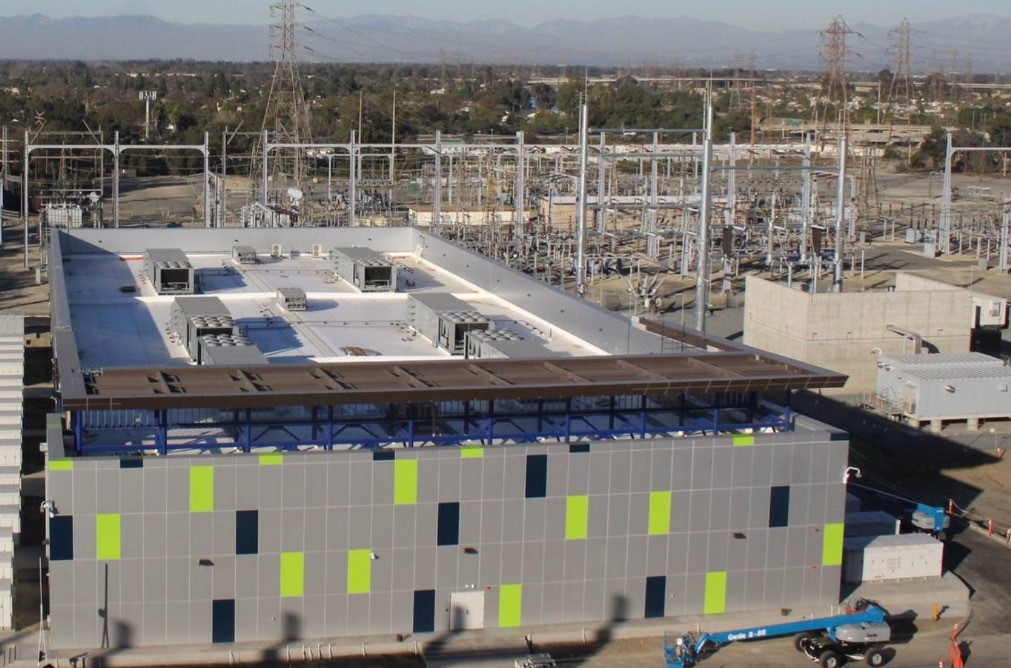
A debt financing deal closed by independent power producer (IPP) sPower for a 100MW / 400MWh battery storage project in California demonstrates that significant project finance investment can be achieved for large-scale battery facilities.
That’s according to Frank Beckers, a partner at renewable energy and clean technologies advisory firm Apricum Consulting. Beckers was asked to comment by Energy-Storage.news on an announcement earlier this week by sPower that the IPP has closed a transaction worth US$152.4 million to finance its Luna Storage standalone lithium-ion battery project in the City of Lancaster, Los Angeles County.
Enjoy 12 months of exclusive analysis
- Regular insight and analysis of the industry’s biggest developments
- In-depth interviews with the industry’s leading figures
- Annual digital subscription to the PV Tech Power journal
- Discounts on Solar Media’s portfolio of events, in-person and virtual
The non-recourse debt raise was arranged by a group of three private financial institutions: KeyBank Capital Markets, Credit Agricole Corporate and Investment Bank and Silicon Valley Bank, together with Canada’s state-owned export credit agency Export Development Canada. sPower has a 15-year Energy Storage Agreement (ESA) in place with electricity provider Clean Power Alliance, a Community Choice Aggregator (CCA). sPower is owned by AES Corporation, having been merged into the Clean Energy business of the Virginia-headquartered multinational electric power company in January.
“Closing this landmark debt financing deal underscores the advancements of standalone battery storage technology to help us transition to a reliable, carbon-free grid,” AES Clean Energy’s CFO James Marshall said.
California’s CCAs operate in the service areas of the state’s large investor-owned utilities. In CPA’s case that is Southern California Edison (SCE). CPA gets to use SCE’s electricity network to deliver power to its three million customers, but also gets to choose where its power is generated. Since CPA was formed in 2017 with a central mission to offer renewable energy and help lower emissions and pollution for the communities it serves, it is buying more renewable energy. In November, it signed a power purchase agreement (PPA) with sPower for output from Estrella, a 56MW solar and 28MW / 112MWh battery energy storage project, which carried on a prolific run of similar deals for CPA that Energy-Storage.news has reported on.
Its tariffs for commercial and residential customers offer around a third, half or all of their power to come from renewables. The state regulatory authority, the California Public Utilities Commission, ordered CPA to procure at least 98.4MW of new capacity to meet reliability requirements by the start of this year, a figure the electricity provider said it had already surpassed by the time it signed the Energy Storage Agreement with sPower.
The agreement will enable CPA to use the Luna Storage facility to help integrate bigger shares of variable renewable energy onto its networks and reduce reliance on local natural gas power plants scheduled to be closed down. From sPower’s side, the agreement also appears to have been instrumental in allowing it to find the non-recourse debt financing it needed.
AES’s James Marshall said the agreement would help CPA to “cost-effectively” integrate more renewable resources onto the grid while providing reliability to its customers at a fixed price.
Apricum’s Frank Beckers – whose company was not involved in the deal but was asked by Energy-Storage.news for his thoughts on it in his capacity as an expert on clean energy industry transactions — agreed with Marshall that it was a “landmark transaction” for the industry.
“This landmark transaction demonstrates the ability to tap on sizeable Project Finance debt funding for a standalone utility-scale battery storage project with, as far as we understand, secured revenues and a clear operational regime through a long-term Energy Storage Agreement,” Beckers told Energy-Storage.news.
However, Beckers said that finding financing on this scale might be tricky for more merchant projects that may not be able to show a definite long-term path to return on investment to investors.
“While the market seems to enable more of these non-recourse financing schemes for energy storage projects with long-term contracted revenues, a similar financing structure for market risk-exposed battery storage projects, that cannot rely on long-term fixed revenues, will be more challenging to implement.
“To further support the expected growth of BESS, we believe that a market for higher risk-taking financing instruments will have to emerge. While higher risk-taking instruments will require higher returns, they may be the only alternative to equity financing in the absence of long-term contracted revenues.”
Many other CCAs in California have made bold steps to support the uptake of renewable energy — the state government has in place a zero-emissions target for electricity supply by 2045. As with Clean Power Alliance, this has led to the recent signing of numerous PPAs for other CCAs to buy dispatchable solar from PV plants paired with four-hour duration battery storage in the past year or so. Towards the end of 2020, a group of CCAs including CPA released a request for proposals (RFP) for up to 500MW of long-duration energy storage.






